AlwaysOn 2016 – Encrypted Databases and Performance
By Ginger Daniel | Encryption
It is common knowledge that encrypting a database causes degraded performance in a SQL server. In an AlwaysOn environment performance can be even more sluggish because there is the extra element of data replication latency. How much difference does it really make? Of course the answer is “it depends” on your environment and your workload. I was curious to see for myself what kind of performance hit encryption would have on one of my test databases, so this post will look at CPU usage of an encrypted vs non-encrypted database.
Microsoft says that turning on TDE (Transparent Data Encryption) for a database will result in a 2-4% performance penalty, which is actually not too bad given the benefits of having your data more secure. There is even more of a performance hit when enabling cell level or column level encryption. When encrypting any of your databases, keep in mind that the tempdb database will also be encrypted. This could have a performance impact on your other non-encrypted databases on the same instance.
In a previous post I demonstrated how to add an encrypted database to an AlwaysOn group in SQL2016. In this article I will demonstrate the performance effects of having an encrypted database in your AlwaysOn Group compared to the same database not-encrypted.
I have 3 identical test databases I will use to look at performance metrics.
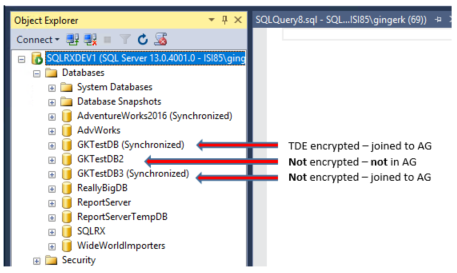
There are some good open source tools for performing stress tests on your SQL database. You can find one here that uses the AdventureWorks2014 database http://www.sqlballs.com/2016/05/sql-server-random-workload-generator.html. There is also one here and you can use this on any database https://github.com/ErikEJ/SqlQueryStress/wiki. I will be using the SQLQueryStress tool for my demonstration.
To measure performance metrics, create a User Defined Data Collector Set in Performance Monitor (Perfmon). There are many metrics that can be measured, but I will only be looking at CPU % Processor Time.

Download and open the SQLQueryStress tool, and create a statement to run against your database. In my test I will first look at the performance of running a select query for 5000 iterations on a database that has not been added to the AlwaysOn group, and has not been encrypted: (GKTestDB2)
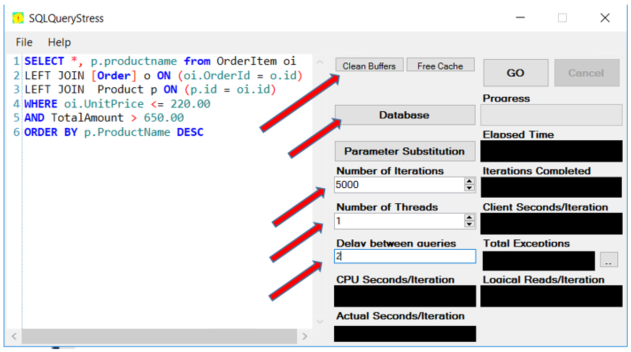
Be sure to clear the buffers and cache before performing each stress test. Select your database, the server name, the number of iterations, the number of threads and the delay between queries in milliseconds.

Start your user defined Perfmon data collector set, then start the stress test in the SQLQueryStress tool.

At the end of each stress test you will need to manually stop your Perfmon collection.
Now I will perform the same stress test to see performance on the identical but Encrypted database in the AlwaysOn group (GKTestDB). Be sure to clear the buffers and cache, and change the database in the SQLQueryStress tool.
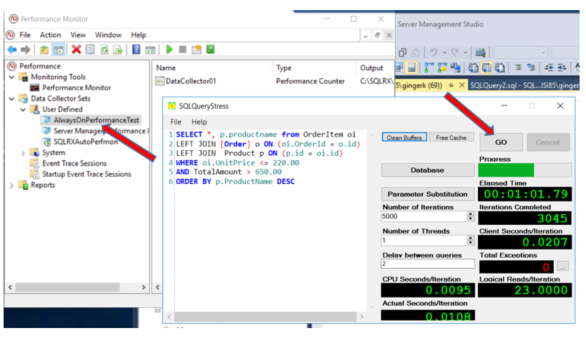
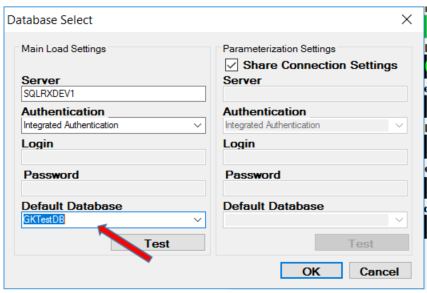
Just for curiosity sake, I’m also going to test the identical database that is not encrypted, but is included in the AlwaysOn group (GKTestDB3):
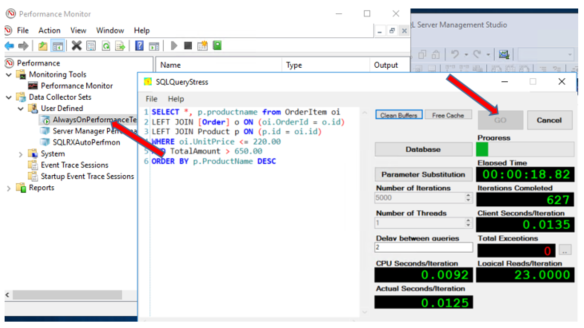

I set the output files of my Perfmon results to land in a location on my local drive so that I can open up the results of each test and compare.
The CPU usage for the database not encrypted and not in my AlwaysOn group averaged 43% for the duration the test was run, as shown by the dark line on the graph below.
Not Encrypted / Not in AG database CPU usage:

The CPU usage for the identical database that is encrypted and is in the AlwaysOn group averaged 57.5% during the stress test as shown on the graph below. This is quite a bit more than the non-encrypted/non AG database, especially given the simple statement that was being run.
TDE Encrypted / Joined to AG Database CPU usage:

And finally, the CPU usage for the identical database that is not encrypted, but is included in my AlwaysOn group averaged 43.4%, which is not much different than the non-encrypted /non-AG database above.
Not Encrypted / Joined to AG Database CPU usage:


Having an encrypted database creates a noticeable CPU performance hit as compared to a non-encrypted database. Microsoft provides many options for protecting your data, transparent data encryption (TDE) being one of them. The benefits and assurance of securing your data outweigh the performance cost, however it may be useful to see how much of a performance hit your system will encounter prior to deciding which security options your organization will deploy.
For more information about blog posts, concepts and definitions, further explanations, or questions you may have…please contact us at SQLRx@sqlrx.com. We will be happy to help! Leave a comment and feel free to track back to us. Visit us at www.sqlrx.com!
Session expired
Please log in again. The login page will open in a new tab. After logging in you can close it and return to this page.
[…] Ginger Keys has an analysis stress testing CPU load when Transparent Data Encryption is on and a dat…: […]